When it comes to choosing ethical cosmetics, many of us have wised up to the list of ingredients we should be avoiding to ensure our products are fair-trade, cruelty-free, vegan and sustainable. But when it comes to sunscreen, it can often be tricky to choose one that’s truly eco-friendly. To help you find a suncare formula that’s ocean-friendly and reef-safe yet still offers lasting protection, we spoke with Susie Ma, founder of Tropic Skincare, to find out what makes sunscreens harmful for our skin as well as the planet, plus the biggest misconceptions around wearing sunscreen.
Cruelty Free Beauty
- 4 signs you have low iron levels
- Zero Waste Beauty: Adopt a green routine with these sustainable products
- This eco-friendly beauty box is packed with refillable multi-taskers
- “I find myself using it even when I don’t need to!”
- Arctic-inspired natural skincare brand launches in the UK
- Green People launches beauty balm packaged in 100% biodegradable pot
- Lush launches same-day delivery service for its iconic handmade cosmetics
- “This cruelty-free tanning water gave me the confidence boost I needed”
- rho launches sustainable loungewear that gives back
- Rose & Caramel Raises Awareness For Women’s Self-Esteem & Mental Health With ‘I TAN FOR ME’ Campaign
- Couple launches entirely plant-based and refillable deodorant on Kickstarter
- View all
Eco Living
- Simple Hacks to Cut Your Food Waste with Gino D’Acampo
- Five Easy Ways to Reduce Food Waste
- Eat these foods to boost your mood
- Upgrade Your Cheese Toastie
- Have a healthy Christmas with these festive food swaps
- Omega-3 Health Benefits
- 5 minutes with Max La Manna
- A nutritionist’s guide to eating for healthy joints
- Easy ways to achieve your health goals
- Discover the benefits of raisins on a vegetarian diet
- Improve your gut health with California Raisins
- View all
Vegan Recipes
- Quorn Vegan Hot & Spicy Burger with Pink Slaw
- Tomato and Pumpkin Soup
- Pea and elderflower cocktail
- Matcha Coconut Ice Cream
- Vegan Lemon Bars
- Mango Salad with Thai Dressing
- Garden Gimlet
- Tofu & Green Beans Teriyaki
- Cornflakes Bombay
- Rainbow Pickle
- Soba noodles with kale and collards
- View all
Popular recipes
- Spinach and ricotta quiche vegetarian recipe
- Cheats mushroom and spinach lasagne vegetarian recipe
- Lentil bolognese vegetarian recipe
- Creamy mushroom stroganoff vegetarian recipe
- Malaysian Rendang curry vegetarian recipe
- Feta, Butternut Squash, Caramelised Onion and Cashew Nut Wellingtons
News
- The Big Bakes To Host Online Baking Classes
- Lush launches same-day delivery service for its iconic handmade cosmetics
- Nature lovers needed to help The Wildlife Trust restore 30% of nature by 2030
- PETA releases vegan guides to top holiday destinations
- Simple Hacks to Cut Your Food Waste with Gino D’Acampo
- rho launches sustainable loungewear that gives back
- Tropic launches environmentally friendly sunscreen range
- A catering company is now delivering vegetarian and vegan ingredients to your doorstep
- BAM launches sustainable denim jeans for men and women
- OLIO encourages Brits to turn Christmas leftovers into meals for neighbours in need
- These vegan chicken drumsticks are ideal for a midweek meal
- View all
The best eco-friendly sunscreens of 2020
These ocean-friendly formulas are kind on your skin as well as the environment

What makes sunscreen reef-safe?
Coral reefs around the world are being seriously impacted by climate change as well as ocean pollution. Choosing an ocean-friendly sunscreen could help make a huge difference, by ensuring that the formula you lather yourself up with when you’re outdoors, won’t end up polluting our waterways. But did you know that many ingredients included in sunscreens are equally as harmful for our own health as they are to the environment?
“Ingredients such as oxybenzone, octocrylene and octinoxate have been linked to being hormone disruptors,” Susie explains. “They also have harmful impacts on our ecosystems, and may contribute to aquatic and marine pollution. The US National Oceanic and Atmospheric Administration says that unsafe sunscreen chemicals such as these can accumulate in coral tissues, leading to bleaching and DNA damage. To protect their coral reefs, Palau and the US state of Hawaii have signed legislation to ban sunscreens containing oxybenzone in their formulations.”
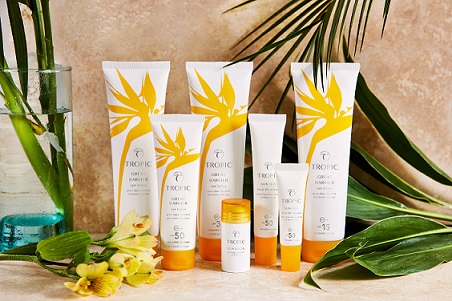
Aside from avoiding these key ingredients, look for sunscreens that contain mineral sun filters, such as non-nano zinc oxide and titanium dioxide. Keep in mind that there are also some safe chemical sun filters. Tropic’s Great Barrier range, for example, uses a combination of mineral and chemical filters that are safe to use in the ocean, and are independently certified by Protect Land + Sea as being reef safe.
Not sure whether your sunscreen is ocean-friendly? Download the Think Dirty app to see how clean your favourite brand truly is.
Protecting your skin
Once you’ve found the perfect reef-safe sunscreen, getting into the habit of wearing it on a daily basis will ensure your skin is properly protected.
“There are so many misconceptions around wearing sunscreen, but if I had to debunk one, once and for all, it’s the idea that you only need it in summer,” Susie says. That’s right: we should all be wearing sunscreen even in winter!
“UV rays affect us every day, even on cloudy days. They are at their strongest during the hours around midday, with 60% of UV rays received between 11am and 3pm; that’s why it’s so important to wear sunscreen every day.
“To stay safe, avoid the sun during peak hours, especially in the summer months where UV rays are more powerful. Keep young children and babies out of direct sunlight as their skin is much more sensitive. And stay covered! Ensure sunscreen is regularly applied to areas not protected by clothing, such as the face, ears, feet, and backs of hands. Less is never more, so always be generous with your application. There’s also no healthy way to tan from UV rays, so if you’d like to tan, try a naturally-derived self-tanning range.”
5 ocean-friendly and reef-safe sunscreens
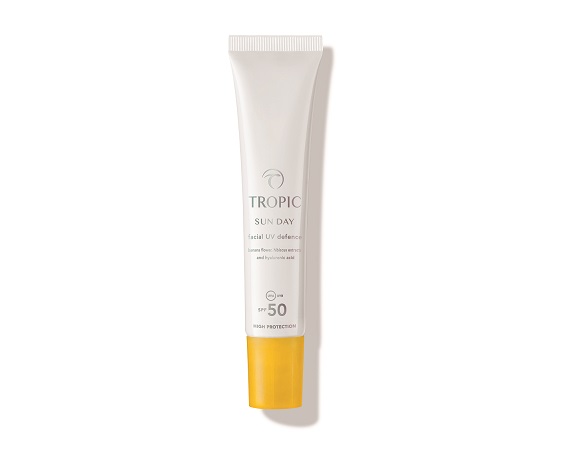
Tropic SUN DAY Facial UV Defence SPF 50, from £10, tropicskincare.com
Wearing sunscreen every day feels like less of a chore when it smells and feels this divine! Tropic’s new facial sunscreen smells like a sunny, tropical beach thanks to the addition of banana flower extract and hibiscus extract, which also provide next-level pollution protection and anti-inflammatory benefits. It’s a win-win! Offering a weightless, transparent finish, it also doubles up as a multi-tasking make-up primer. So you really have no excuses!
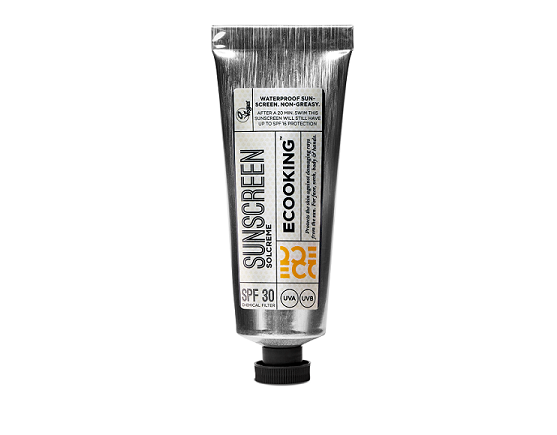
Ecooking Waterproof SPF30, £28, lookfantastic.com
Suitable for both face and body, Ecooking’s SPF30 formula is lightweight, so easily absorbs into the skin. The waterproof sunscreen is enriched with organic and natural ingredients such as aloe vera, cucumber and glycerin to nourish your skin while protecting it from harmful UV rays. Vegan and cruelty-free, it’s dermatologically tested, and suitable for the whole family!
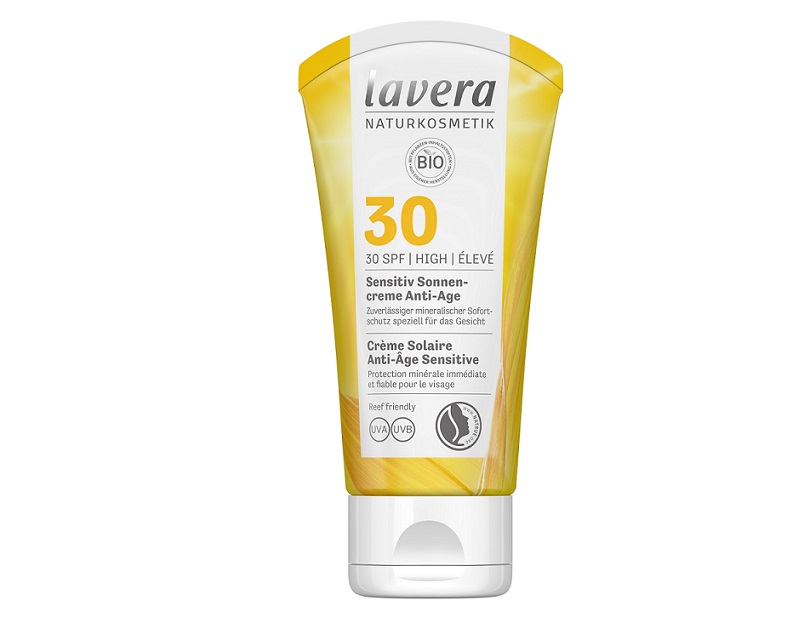
Lavera Anti-Ageing Sensitive Sun Cream SPF 30, £19.95, laverauk.co.uk
Made with natural and organic ingredients, Lavera’s sun-care range has been reformulated with the Lavera Green UV Complex. Based around mineral UV filters and karanja oil, it helps to heal, hydrate and smooth skin whilst acting as a natural sun protector. The Anti-Ageing Sensitive Sun Cream SPF30 also helps to protect against premature skin ageing such as the appearance of dark spots and wrinkles, and hyperpigmentation. With sunflower oil and organic coconut oil, the lightweight formula offers delicate protection and is biodegradable.
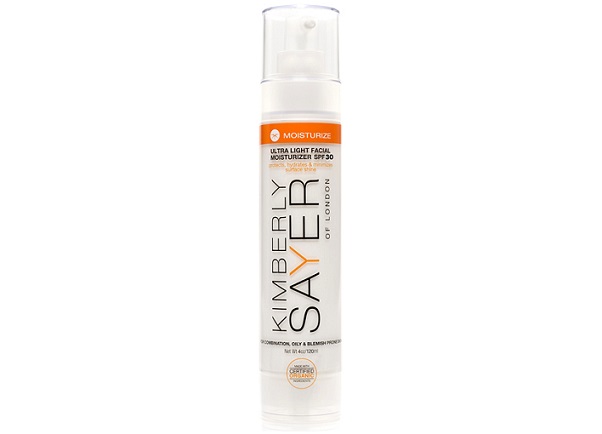
Kimberly Sayer Ultra Light Organic Facial Moisturiser SPF 30, £28.30, lovelula.com
A great way to incorporate sunscreen into your daily routine is by choosing a moisturiser than includes SPF in the formula. Kimberly Sayer’s facial moisturiser is a lightweight, protective day cream that contains mineral sunscreen. Easily absorbed and idea for using under make-up, the cream contains lemon to detoxify your skin and minimize the production of oil while drying up acne and zits, as well as oat beta glucan to protect your skin against UVA oxidative stress.
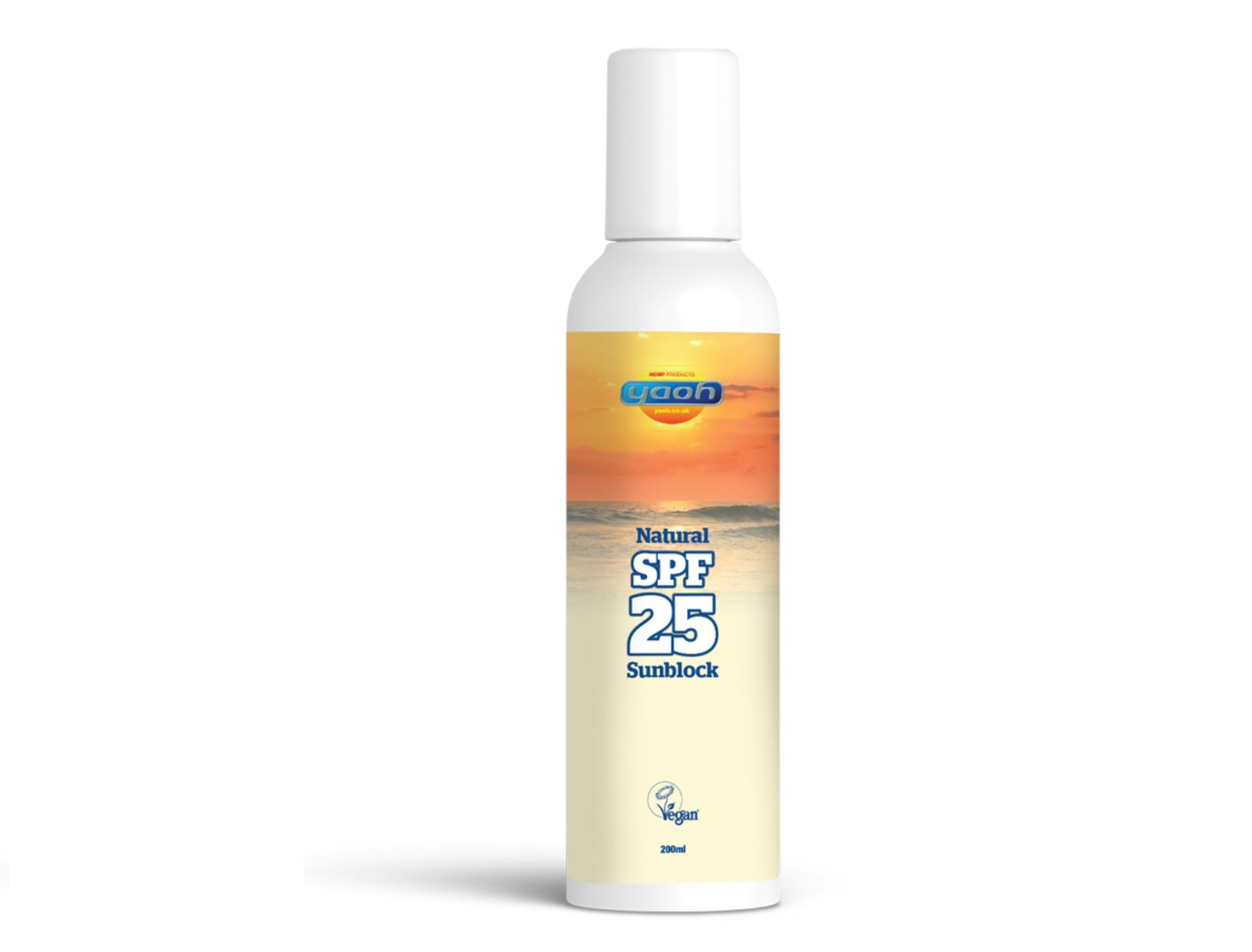
Yaoh Natural SPF25 Sunblock, from £9.99, yaoh.co.uk
Using non-nano zinc oxide as the active ingredient, Yaoh’s new sunblock offers complete UVA and UVB protection. Ideal for all skin types and great for children, the vegan-friendly formula is suitable for those with sensitive skin, and uses hemp as its star ingredient. Choose from SPF 15, 25 and 30, with the SPF25 now available in a glass jar for a plastic-free alternative.
More from Vegetarian blog

Ahead of Fairtrade Fortnight from 24th February to 8th March, Jo Gould investigates how easy it is to solely purchase ethical products

Make a stylish statement in your home with these ethical and sustainable homeware brands in the UK

Looking good never felt so good with these compassionate brands

Can the fashion industry and sustainability ever go hand-in-hand? Veggie investigates

Take inspiration from TIME’s person of 2019, Greta Thunberg, with an extract from No One is Too Small to Make a Difference




